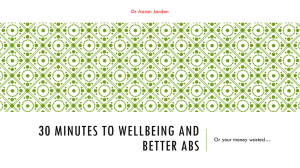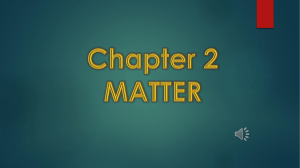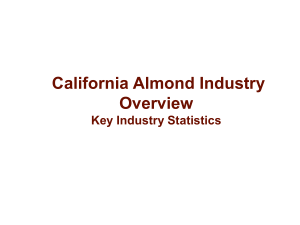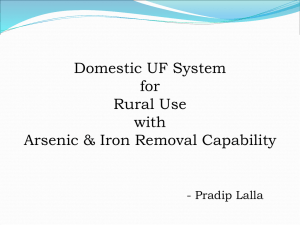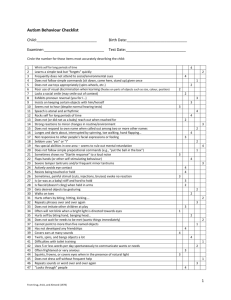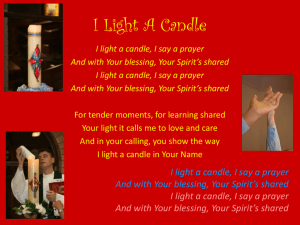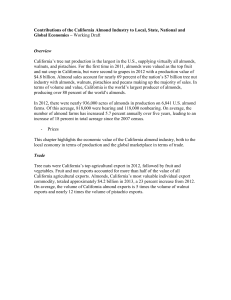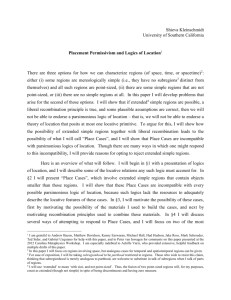docx - STAO
advertisement
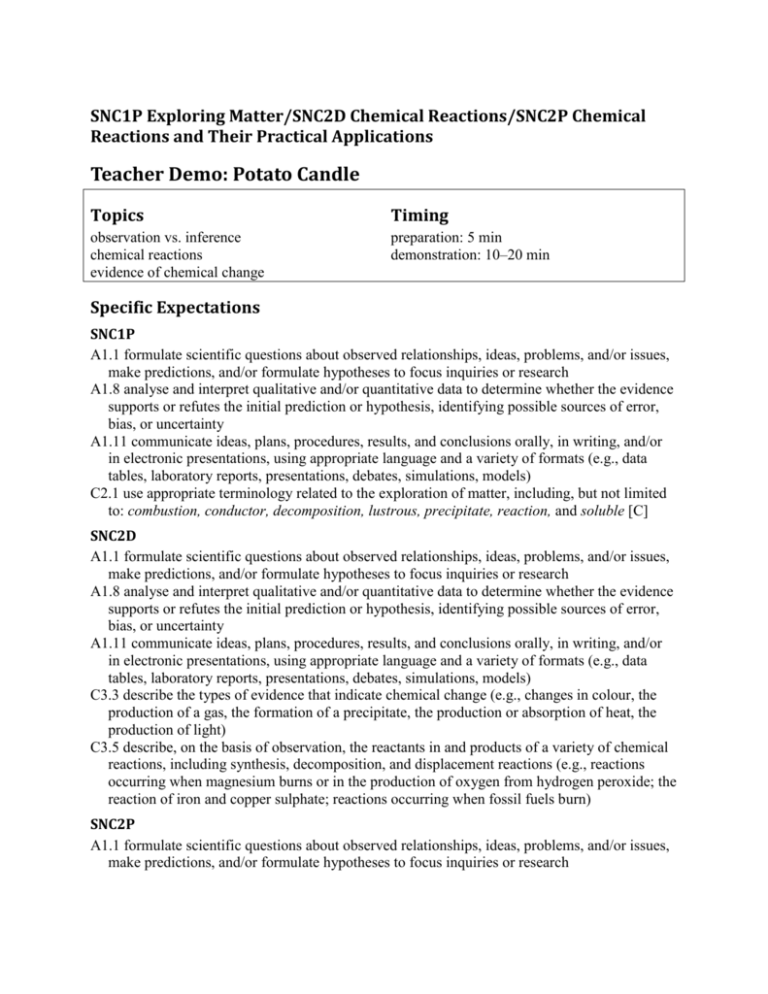
SNC1P Exploring Matter/SNC2D Chemical Reactions/SNC2P Chemical Reactions and Their Practical Applications Teacher Demo: Potato Candle Topics Timing observation vs. inference chemical reactions evidence of chemical change preparation: 5 min demonstration: 10–20 min Specific Expectations SNC1P A1.1 formulate scientific questions about observed relationships, ideas, problems, and/or issues, make predictions, and/or formulate hypotheses to focus inquiries or research A1.8 analyse and interpret qualitative and/or quantitative data to determine whether the evidence supports or refutes the initial prediction or hypothesis, identifying possible sources of error, bias, or uncertainty A1.11 communicate ideas, plans, procedures, results, and conclusions orally, in writing, and/or in electronic presentations, using appropriate language and a variety of formats (e.g., data tables, laboratory reports, presentations, debates, simulations, models) C2.1 use appropriate terminology related to the exploration of matter, including, but not limited to: combustion, conductor, decomposition, lustrous, precipitate, reaction, and soluble [C] SNC2D A1.1 formulate scientific questions about observed relationships, ideas, problems, and/or issues, make predictions, and/or formulate hypotheses to focus inquiries or research A1.8 analyse and interpret qualitative and/or quantitative data to determine whether the evidence supports or refutes the initial prediction or hypothesis, identifying possible sources of error, bias, or uncertainty A1.11 communicate ideas, plans, procedures, results, and conclusions orally, in writing, and/or in electronic presentations, using appropriate language and a variety of formats (e.g., data tables, laboratory reports, presentations, debates, simulations, models) C3.3 describe the types of evidence that indicate chemical change (e.g., changes in colour, the production of a gas, the formation of a precipitate, the production or absorption of heat, the production of light) C3.5 describe, on the basis of observation, the reactants in and products of a variety of chemical reactions, including synthesis, decomposition, and displacement reactions (e.g., reactions occurring when magnesium burns or in the production of oxygen from hydrogen peroxide; the reaction of iron and copper sulphate; reactions occurring when fossil fuels burn) SNC2P A1.1 formulate scientific questions about observed relationships, ideas, problems, and/or issues, make predictions, and/or formulate hypotheses to focus inquiries or research A1.8 analyse and interpret qualitative and/or quantitative data to determine whether the evidence supports or refutes the initial prediction or hypothesis, identifying possible sources of error, bias, or uncertainty A1.11 communicate ideas, plans, procedures, results, and conclusions orally, in writing, and/or in electronic presentations, using appropriate language and a variety of formats (e.g., data tables, laboratory reports, presentations, debates, simulations, models) C2.1 use appropriate terminology related to chemical reactions, including, but not limited to: antacid, dilute, neutralization, product, reactant, and word equation [C] Introduction In this demonstration, a peeled potato is cut into the form of a candle and an almond slice is used as the candle’s “wick.” The teacher lights the almond slice on fire and it burns. The students see the object, and make observations about it. Then the teacher blows the flame out and allows the students to get a closer look at the “candle.” This demo is an excellent way of explaining the difference between “observations” and “inferences.” Materials chemical safety goggles lab coat or apron 1 medium potato, peeled sharp knife cutting board water 500 mL beaker 1 piece of raw, slivered almond (about 1 mm square in cross-section) saucer or Petri dish lighter or matches Safety Considerations Since this demo involves an open flame, it should be conducted only by the teacher. Check the fire extinguisher before the class to ensure that it is working. Before the demonstration, remind the students of the emergency procedures for fires (extinguisher use, fire exits, etc.). Before the demonstration, CHECK FOR SEVERE ALMOND ALLERGIES amongst your students. If allergies are a problem you could substitute a small piece of heavy white card for the slivered almond. The card should burn for the few seconds required for students to make their observations. During the demonstration, keep a bucket of sand on hand to extinguish any accidental fire. Procedure Wear appropriate PPE: safety goggles, lab coat and apron. 1. Prepare the “candle” before class as follows: cut the peeled potato into a cylinder. Score a line about 4 mm deep in one end of potato “candle.” If these preparations are done more than 10–15 min before the beginning of class, keep the peeled potato cylinder submerged in tap water. When the class is in progress: 2. Remind students of emergency procedures related to fire (extinguisher use, fire exit, etc.). 3. Conduct a brainstorming and discussion session as follows: 4. 5. 6. 7. 8. a. Ask guiding questions to get students to distinguish between observation and inference, using specific examples. Write definitions and examples on the board for reference during the demonstration. For example: How would you distinguish Observation Inference between an observation and I see a green, spherical I see a canteloupe. an inference? object 20 cm in diameter. b. Discuss how to make good observations (e.g., take measurements, consider properties that you can directly observe, use your senses and/or tools). Remind students that in a lab they should never taste anything nor smell anything directly. Remind students of the correct indirect smelling technique or “wafting.” c. Explain that you will show them something and that you want them to suggest first examples of OBSERVATIONS and then―only when you ask for them―examples of INFERENCES. Out of sight of the students, place the potato on the saucer, insert the almond sliver into the scored line in the top of the potato. Light the tip of the almond using a lighter. Bring the burning “candle” out to where all students can see it (but not too well). Ask students to voice their OBSERVATIONS. Refer to the notes on the board. Ask students to suggest INFERENCES. Blow out the burning almond, wait 10 s, then allow students to examine “candle” closely Ask students: whether they still think it was a candle; why they made an inference based on their observations; if they had enough good observations to work with; and what other observations/ways of observing could have been used. Disposal The potato and almond should be disposed of in municipal compost if available. Otherwise, dispose of them in the garbage container. What happens? The almond slice lights on fire and burns, making the potato and almond structure look like a burning candle. How does it work? The almond contains oils which burn when ignited. The potato itself is just a base to hold the almond. Teaching Suggestions/Hints 1. 2. Prepare the “candle” ahead of time and bring it out in front of the students already burning. Keep them a few metres away, so that they cannot get a good look at the “candle.” The more chance they have to see it is not a real candle, the less effective the demo. Be sure to let the almond cool off by waiting 10 s between blowing out the flame and allowing the students to handle the candle. Next Steps Ask students to identify evidence that suggests that a chemical change occurred during the demonstration. Challenge students to identify the characteristics of an ideal fuel. Additional Resources 1. A video and explanation of the principles behind this demo http://sciencesquad.questacon.edu.au/activities/edible_candle.html

